Freya Gabie has been commissioned to create a series of artworks for the new facility on 256 Grays Inn Road. We caught up with Freya to find out about her upcoming plans.
Can you tell us about your background?
I was born in south-west England, and studied sculpture at Chelsea College of Art. After graduating I left London, spending five years living in Glasgow, which really sparked an interest in working outside of a studio and directly in context to specific environments I found around the city.
I then undertook an MA in Sculpture at the Royal College of Art back in London, which I loved and which was a really beneficial period for my work, helping me consolidate my interests around working site-specifically.
Since then, I’ve been lucky enough to undertake projects in some amazing places, from the desolate landscapes of Norway and Iceland, a decommissioned iron mine, a marine research ship travelling around coastal Africa, a fur museum in Sweden and a baroque castle in France. I’m interested in exploring the material resonance of these places alongside other people’s shifting connections to them. I think about what constructs place, how we delineate and map it through the objects, histories, stories, beliefs, myths and songs that form around it.
I work across media, from large-scale installations to subtle, transient interventions that may exist as a photograph, sound, smell or residual trace. I often work collaboratively, with a wide spectrum of individuals and communities in the UK and abroad, from opera singers, industrial weavers, clog dancers to rope makers.

‘Pavel’s Journey’: In 2019 the Nansen Passport refugee journey of Pavel Kiprianovitch was retraced on foot, 90 years after his original departure in 1929, from Bulgaria to France. Stones along the route were picked up, drawn and replaced. Two portraits were drawn of each stone, representing the two journeys taken, by the Pavel and by Freya. One of each drawing was sent to people from route across the word, the other was kept to form this archive.
What attracted you to the public artist role at Grays Inn Road and how do you hope your work will contribute to the identity of the new building?
The new centre for neurological research will be built on a site brimming with history! It is situated on the banks of the historic subterranean river Fleet, where nearby well-springs existed throughout past centuries as a destination for people seeking medical cures by drinking the water, which was thought to have ‘health giving’ properties.
The future of the site will reflect this history: the world-leading, groundbreaking research opening out new areas of discovery, deepening and advancing our understanding of neurological illness, and providing new insight into cures.
The site is the nexus between an untold history and a yet unknown future; I’m really interested in drawing on these connections and stories in the work that I make, revealing them and bringing them into new light. I'm also really looking forward to engaging with the work of IoN, the UK DRI and UCLH, looking to their scientific approaches and techniques, which will inform the ways in which I consider, frame and respond to the site.
What themes do you explore in your work?
I work in response to my environment, using the particular materials and artefacts found within that context as gathered components. I am interested in the unconscious and shifting exchange between objects, people and their environment; the ways in which we relate to our surroundings, the features we highlight, aspire to, believe in but also the aspects of it that are pushed aside or edited out.
Drawn to the tentative and peripheral, my work seeks to rupture relationships between these entities through interjections that give a new meaning and agency.
I’m interested drawing out secret histories and social narratives manifest within objects and places, revealing the ways these histories are expressed; how they re-tell the past, or express a version of the present that frames personal and cultural identity.
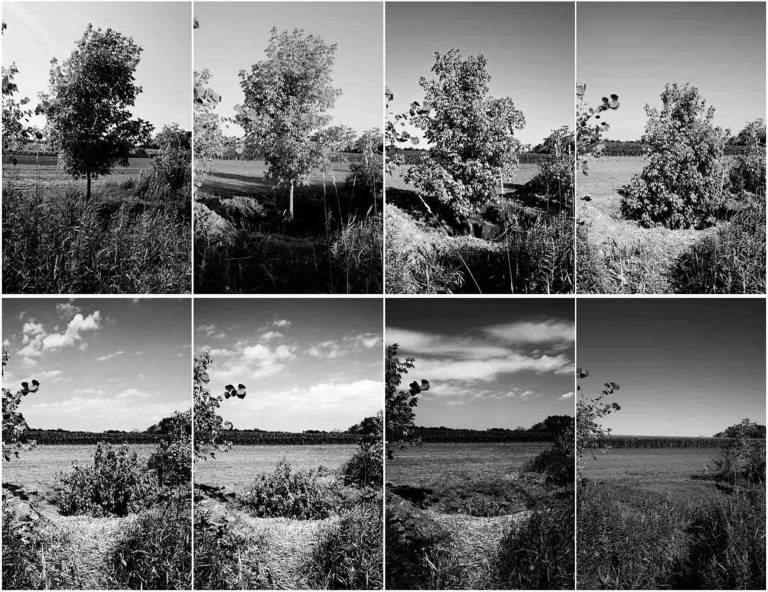
'Romantic Gesture': A site specific intervention at Franconia Sculpture Park where a tree was buried back into the landscape it had grown out of. Franconia Sculpture Park, MN, USA.
What medium and materials do you work with?
The mediums and materials I work with are really diverse! And they are always informed by the stories and places I’m working in context to. These have included meteorites, the dust from ground-down carpets, to a dance created from the cadent rhythm of the Brexit financial trading date, performed by traditional clog dancers.
My recent work has been concerned with creating an impact in a landscape or context by using the smallest gesture or trace; achieving a sense of monumentality without the need for great physical content to imbue presence.
Music, voice and smell are becoming important; reinventing these transient vestiges as a form of sculpture to permeate spaces with unfamiliar nuances and territories that both displace and relocate.
Alongside my more sculptural/spatial work I have an ongoing drawing practice which allows me a more speculative space in which to work. I love drawing because of its ability to offer an approximation; it sits in the middle ground of presence and absence and speaks as much about one as it does of the other, what is captured can appear as solid as a stone and as ethereal as a thought.
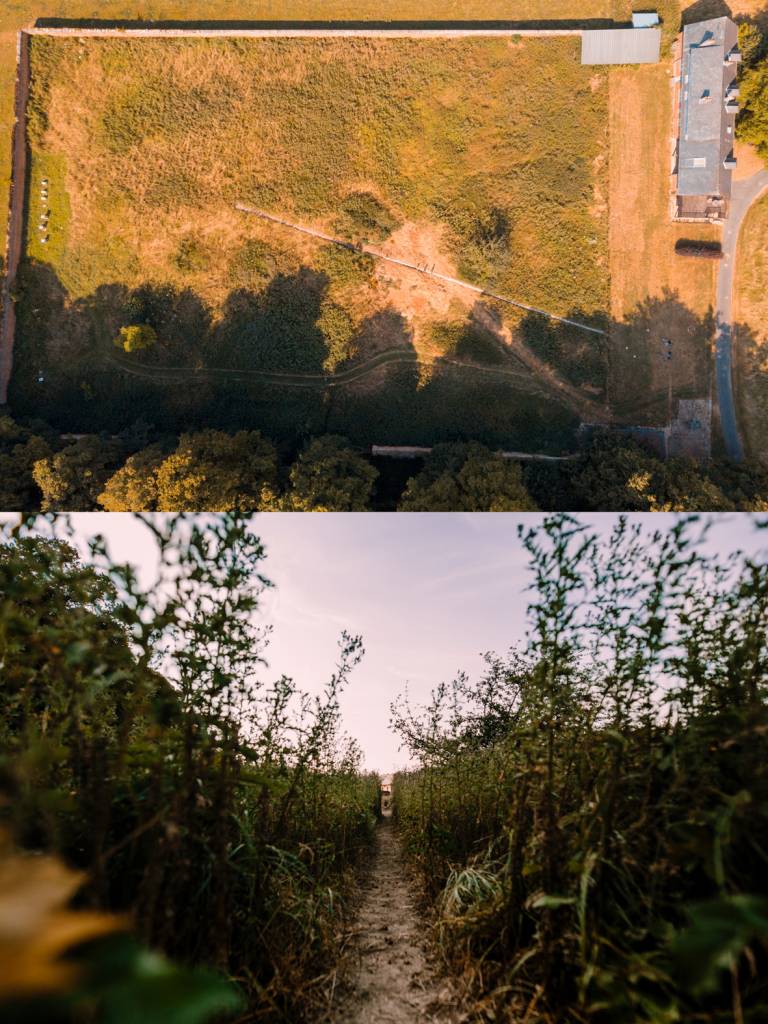
‘Avenue’: Chateaux De Bosmolet, Normandy, France – West Beach, Newhaven, UK. Diep Haven Festival 2018 France / UK
Photography credit: Mac Praed Media, Diep-Haven Festival 2018
‘Avenue’ was created simultaneously in Normandy and on Newhaven’s West Beach along a laser axis between the two countries. The line follows the exact trajectory of the proposed path of the V1 missile route; these doodlebugs were developed and built by the Nazi’s at Chateau de Bosmolet as part of an uncovered plot to bomb Britain. The work seeks to explore the historic connection between the French and English landscape through an exchange of local material – chalk – between the two coasts, with each 'avenue' being formed with material displaced from the others coast.
How do you view the relationship between art and neuroscience?
I’m hoping that this commission will give me the opportunity to learn a lot more about neuroscience! I’m looking forward to spending time with different scientific practitioners and gaining a deeper insight into their approach and processes throughout the commission.
I would say that there’s a connection in the attitude of both disciplines. Both practices are investigatory and inquiring, discursive and creative. They seek to uncover and reveal was is yet unseen or unknown.
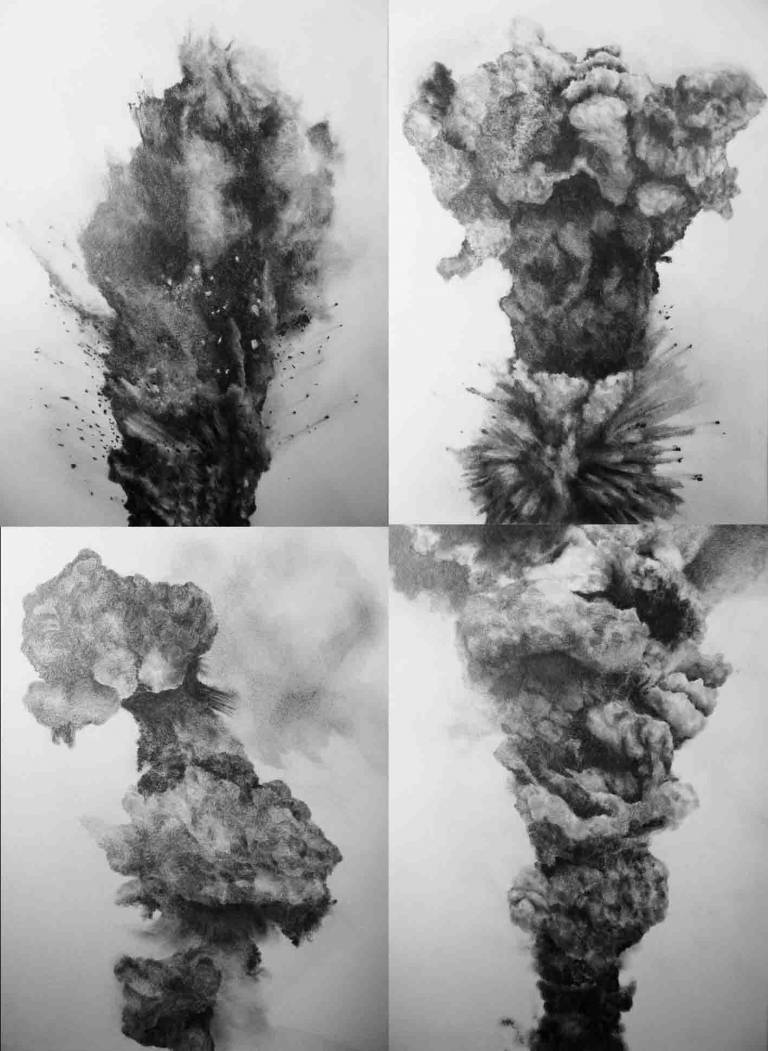
‘Thin Air’: Drawings of military explosions found on the top of Google Image search.
Ongoing series 2015 - present
To what extent do you think art can help people understand or relate to neuroscience research?
It’s difficult to be able to fully ascertain that, but in my experience, working with other practitioners in diverse fields of research has always led me to consider my own work and approach to it in new ways.
I think this also works the other way around: art can invite you to consider or experience something in a new way, or from a new perspective. It can offer a different approach to engaging with something, or highlight an aspect of it that you might otherwise have overlooked.
In this way I hope art has the capacity to alter people’s encounter with and perception of the research, giving them a new entry point to it.
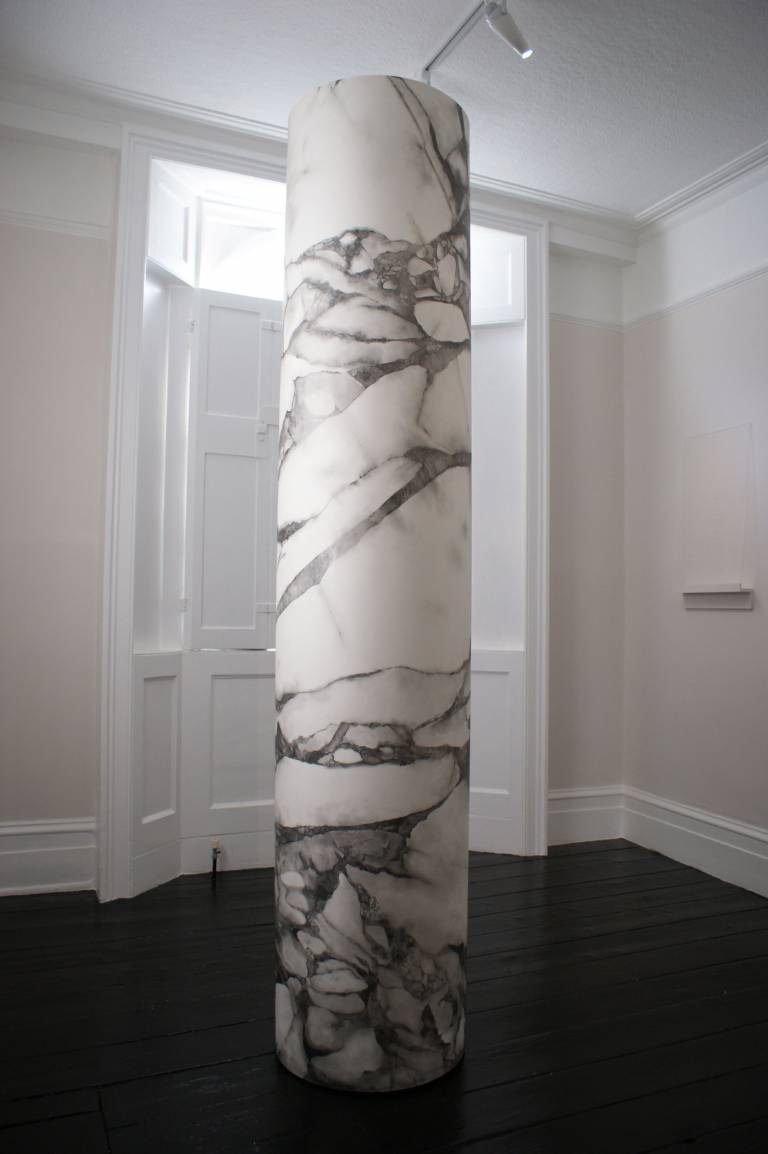
‘Ebb’: Pencil drawing on scrolled paper, replicating a marmorino marble column found in the Venetian ghetto
Created for the solo show 'Quickly, Quietly' at 9B Projects, London
What role do you think art can play in society more broadly?
Wow. That’s a big question! I think art has many roles; it can act as a witness to society, it can question, interrogate, protest or hold to account. It can also offer beauty, sanctuary, refuge or the total escape of fantastical dreaming.
I think the role of art is the act of creating a space of daring, freedom and candor that is somehow separate from our everyday lived experience, where the present can be re-imagined into new form and the past brought back and re-considered.
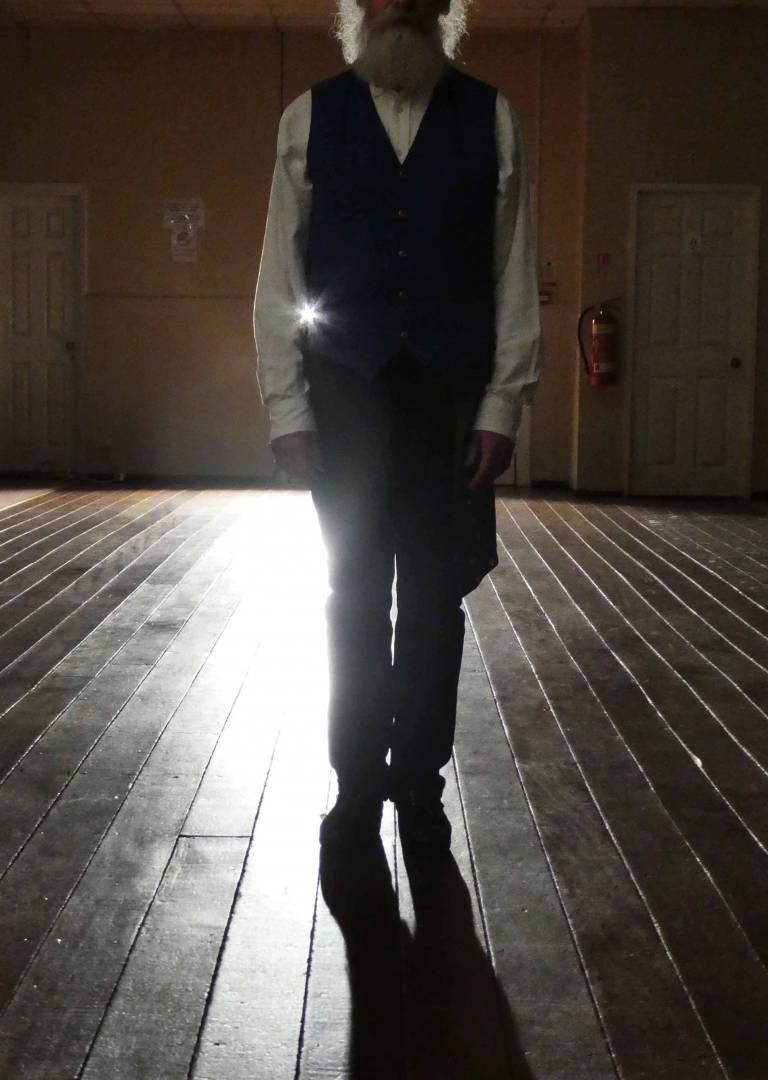
‘Dark Steps’: A clog dance interpreting the financial trading data of Brexit
A filmed performance of a clog dance performed by the Seven Stars Sword and Step Dancers, Wigan, 2016
Can you tell us a bit about your creative process and what inspires your work?
My work is instigated through a form of conversation with place. I want to interrogate my connection to the places and spaces I work in context to; what went on here before? Who has touched or used the objects in this environment? What stories can be found here? Who is telling them?
I pull on these threads I find, mapping and translating as a way of orientating myself within environments and offering a new way into a landscape or object, asking them to re-tell their story in a new way.
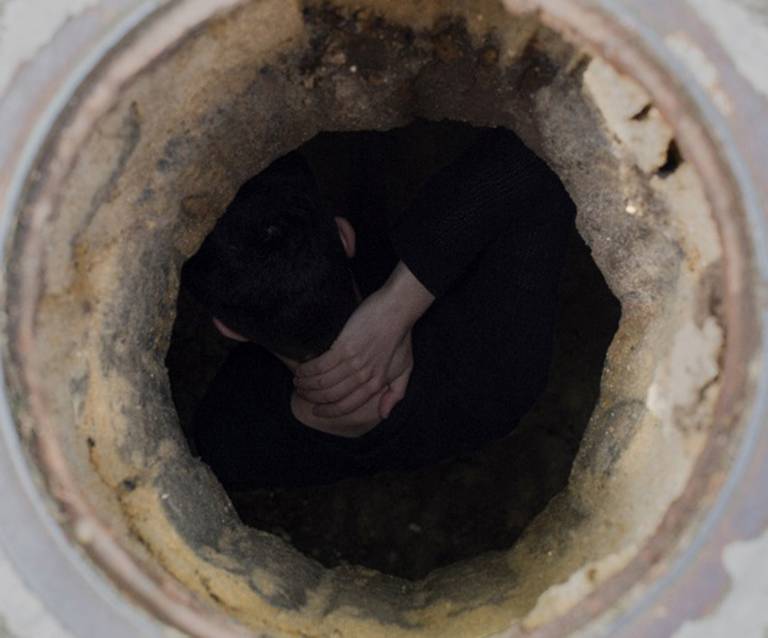
‘Coalhole A Cappella’: A filmed performance in central London, an opera singer performs Lachrimae from a coal hole beneath the pavement to passersby on the street above, London
What are your plans over the coming months for the Grays Inn Road public art programme?
For the moment I’m following lots of different avenues of inquiry and seeing where that takes me. A few things I’ve been researching are the waterways and archeological finds beneath the site, exploring the relationship between water and dementia through history, Greek mythology’s relationship to landscape and the underworld and looking into the newly discovered ‘cold shock’ scientific investigations.
I’m also really interested in exploring the relationship between archeological and neurological techniques, such as ultrasound, to ‘see’ below the surface. It’s been fascinating so far, and I’m really excited to see where this leads me!
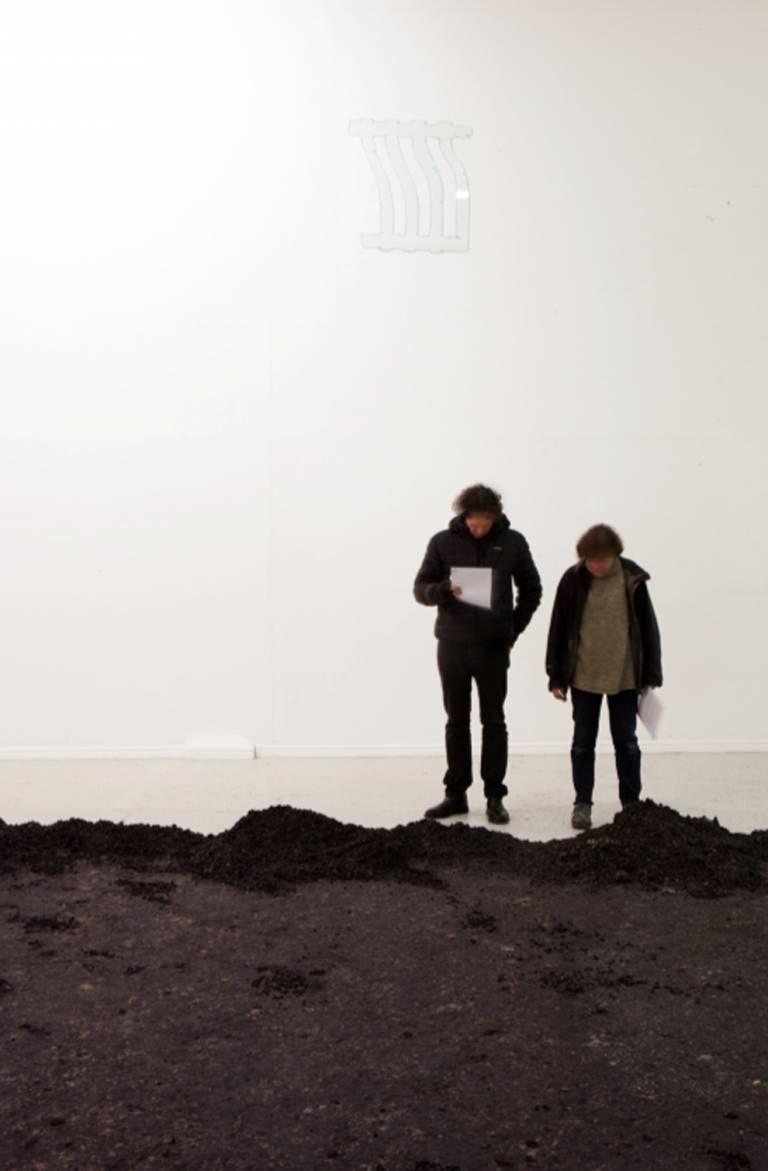
‘This is where we fall’: Ground down and reconstituted carpet taken from empty office space, exhibited at Southside Gallery, London, Photograph by Philimone Hoel, 2017
 Close
Close

